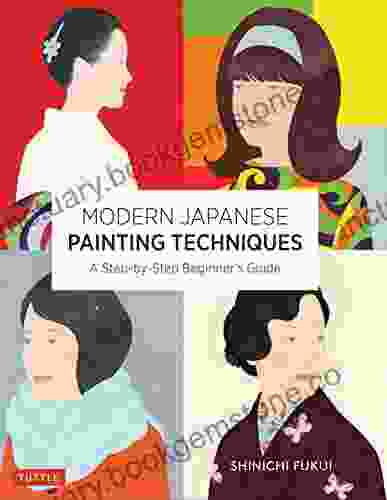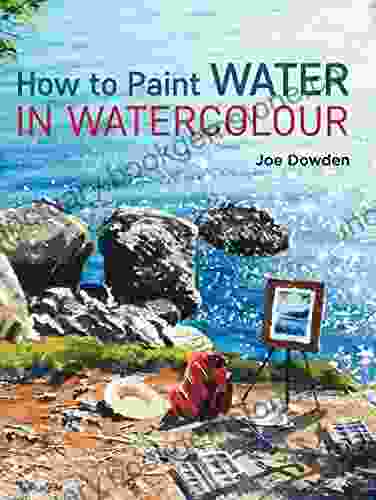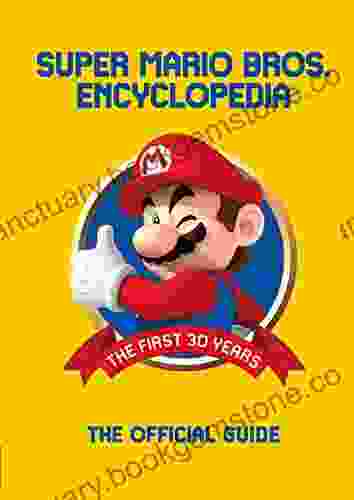Modern Japanese Painting Techniques: A Step By Step Beginner S Guide (over 21 Lessons And 300 Illustrations)

Abstract
Japanese painting, a centuries-old art form, has evolved through various eras, reflecting cultural, societal, and artistic influences. Modern Japanese painting techniques, rooted in traditional practices, have emerged as a fusion of Eastern aesthetics and contemporary artistic expressions. This article explores the history, principles, and diverse techniques of modern Japanese painting, examining their significance in shaping the multifaceted landscape of contemporary Japanese art.
The Genesis of Modern Japanese Painting
The Meiji Restoration of 1868 marked a pivotal point in Japanese history, opening the country to Western influences and sparking a period of rapid modernization. In the realm of art, this era witnessed a departure from traditional artistic practices and a surge of interest in Western art forms. Japanese artists began to incorporate elements of Western painting, such as oil paints and the use of perspective, into their work. The combination of traditional techniques and Western influences gave birth to what is known as "modern Japanese painting."
Principles of Modern Japanese Painting
Modern Japanese painting is characterized by several key principles that distinguish it from traditional Japanese painting:
4.8 out of 5
| Language | : | English |
| File size | : | 28263 KB |
| Screen Reader | : | Supported |
| Print length | : | 147 pages |
- Emphasis on Individual Expression: Modern Japanese painting encourages artists to explore their subjective perspectives and personal styles, breaking away from the rigid adherence to predetermined conventions.
- Fusion of Styles: Modern Japanese artists freely combine elements from different artistic traditions, such as Japanese calligraphy, Western abstract expressionism, and surrealism.
- Exploration of New Materials and Techniques: Modern Japanese painters have experimented with a wide range of materials, including oil paints, acrylics, mixed media, and found objects. They have also developed novel techniques, such as pouring, dripping, and collaging, to create innovative visual effects.
- Incorporation of Western Perspectives: Modern Japanese painting embraces Western techniques like linear perspective, chiaroscuro (light and shadow),and the use of multiple vanishing points.
Techniques in Modern Japanese Painting
Modern Japanese painting encompasses a vast array of techniques, each offering unique expressive possibilities:
Oil Painting:
Oil painting, introduced to Japan in the late 19th century, has become a popular medium for modern Japanese artists. The thick, slow-drying nature of oil paints allows for rich textures, subtle color blending, and the creation of depth and volume. Notable Japanese oil painters include Takeuchi Seihō and Kuroda Seiki.
Nihonga:
Nihonga, a modern interpretation of traditional Japanese painting, emphasizes the use of natural materials such as Japanese paper, ink, and mineral pigments. Nihonga artists often draw inspiration from traditional Japanese aesthetics and subject matter, such as landscapes, nature, and historical scenes. Renowned Nihonga artists include Yokoyama Taikan and Uemura Shōen.
Acrylic Painting:
Acrylic paints, introduced in the mid-20th century, offer a versatile and vibrant medium for modern Japanese painting. They dry quickly, allowing for rapid execution and layering of colors. Acrylics are favored by artists seeking vibrant hues and sharp contrasts.
Mixed Media:
Modern Japanese artists often combine various materials and techniques in their work, creating unique and layered expressions. Mixed media paintings frequently incorporate collage, photography, and found objects, pushing the boundaries of traditional artistic practices.
Informalism:
Informalism, an abstract art movement that gained popularity in Japan in the 1950s, emphasizes the spontaneous and intuitive application of paint. Informalists reject the use of representational forms, instead focusing on the expressive qualities of color, texture, and gesture.
Minimalism:
Minimalism, emerged in Japan during the 1960s, is characterized by its simplicity, geometric forms, and neutral colors. Minimalist paintings often explore the relationship between positive and negative space, as well as the subtleties of light and shadow.
Performance Painting:
Performance painting is a relatively recent development in modern Japanese painting, where the act of painting is presented as a live performance. Performative works may involve audience participation, unconventional materials, and ephemeral gestures that challenge traditional notions of art and its presentation.
Significance of Modern Japanese Painting
Modern Japanese painting has significantly contributed to the global contemporary art scene, shaping its aesthetic sensibilities and expanding the boundaries of artistic expression. Its fusion of Eastern and Western influences has fostered a distinct visual language that reflects both the rich traditions of Japan and the dynamic energies of modern society. Modern Japanese painting has not only enriched the Japanese art world but has also gained recognition and appreciation internationally.
Modern Japanese painting is a continuously evolving art form that combines time-honored traditions with contemporary innovations. Its emphasis on individual expression, fusion of styles, exploration of new materials and techniques, and incorporation of Western perspectives has created a vibrant and diverse artistic landscape. As Japanese artists continue to push the boundaries of their practice, modern Japanese painting continues to evolve, reflecting the ever-changing cultural and artistic climate of Japan and beyond.
4.8 out of 5
| Language | : | English |
| File size | : | 28263 KB |
| Screen Reader | : | Supported |
| Print length | : | 147 pages |
Do you want to contribute by writing guest posts on this blog?
Please contact us and send us a resume of previous articles that you have written.
 Best Book
Best Book Page Flip
Page Flip Bookshelf
Bookshelf Literary loom
Literary loom Chapter
Chapter Bookish
Bookish PageTurner
PageTurner Bibliophile
Bibliophile Story
Story Inkwell
Inkwell Bookworm
Bookworm Labyrinth
Labyrinth Plot Twist
Plot Twist Prose
Prose Paperback
Paperback Storyteller
Storyteller Sanctuary
Sanctuary Fiction
Fiction Reading
Reading Chronicle
Chronicle Read
Read Patricia Preciado Martin
Patricia Preciado Martin Anna M Mazur
Anna M Mazur Andrew Marble
Andrew Marble Anna Goldenberg
Anna Goldenberg Elizabeth L Block
Elizabeth L Block John M Olsen
John M Olsen Marina Benjamin
Marina Benjamin Stephen Kurkjian
Stephen Kurkjian Stacey L Nash
Stacey L Nash Ernest Hemingway
Ernest Hemingway Jason Kramar
Jason Kramar Frederic Lombardi
Frederic Lombardi Diane Esguerra
Diane Esguerra Erwin Panofsky
Erwin Panofsky L T Ryan
L T Ryan James T Deshields
James T Deshields Sylvan Barnet
Sylvan Barnet Kent Babb
Kent Babb Ani Trime
Ani Trime Shannon Leone Fowler
Shannon Leone Fowler Jean Ann Shirey
Jean Ann Shirey William W Johnstone
William W Johnstone Christine Leteux
Christine Leteux Andy Warhol
Andy Warhol Lisa Dickey
Lisa Dickey Lonneke Geerlings
Lonneke Geerlings Charles Bukowski
Charles Bukowski Erin Lewis Fitzgerald
Erin Lewis Fitzgerald Andrew Vietze
Andrew Vietze Cion Lee
Cion Lee C Y Croc
C Y Croc Jane Dunnewold
Jane Dunnewold Liao Yiwu
Liao Yiwu Kristina Kozak
Kristina Kozak Andrea Erickson
Andrea Erickson Andrei Besedin
Andrei Besedin Anna Mocikat
Anna Mocikat Jessica Alba
Jessica Alba Jason Sommer
Jason Sommer Monica Moody
Monica Moody G J Younghusband
G J Younghusband Anne Bogart
Anne Bogart Maggie O Farrell
Maggie O Farrell Barbara Sillery
Barbara Sillery Angel Williams
Angel Williams Andrew Tunstall
Andrew Tunstall Ray Scippa
Ray Scippa Theodore Annemann
Theodore Annemann Brian Shea
Brian Shea Andrew Osmond
Andrew Osmond Terry Brooks
Terry Brooks Alex Tannen
Alex Tannen Dina Nayeri
Dina Nayeri Sylvia Day
Sylvia Day Scott Bartlett
Scott Bartlett Josie Iselin
Josie Iselin Raymond F Jones
Raymond F Jones David J Dennis Jr
David J Dennis Jr Graeme Davis
Graeme Davis Charlie English
Charlie English Danielle Geller
Danielle Geller Charla Krupp
Charla Krupp Andrew Dickos
Andrew Dickos Julie Ann Walker
Julie Ann Walker Angelo Colorni
Angelo Colorni Darrin Duford
Darrin Duford J B Rosenberg
J B Rosenberg David Blatner
David Blatner Val Wake
Val Wake Ann Aguirre
Ann Aguirre Angie Cruz
Angie Cruz Andrew Mayne
Andrew Mayne Jonathan Rauch
Jonathan Rauch Jake Sherman
Jake Sherman Andrew Hund
Andrew Hund Marilyn Chase
Marilyn Chase L J Martin
L J Martin Patrick Smithwick
Patrick Smithwick Robin Sloan
Robin Sloan Stephanie Laurens
Stephanie Laurens Angelico Chavez
Angelico Chavez Anna Qu
Anna Qu Waldemar Bogoras
Waldemar Bogoras Harry Houdini
Harry Houdini Anette Fischer
Anette Fischer Andrea Pflaumer
Andrea Pflaumer Andrew Darby
Andrew Darby Rob Craig
Rob Craig Susan Ross
Susan Ross Andrew Bostock
Andrew Bostock Andrew Parker
Andrew Parker Phoenix Collins
Phoenix Collins D C Robinson
D C Robinson Henry Van Dyke
Henry Van Dyke Andreas Deja
Andreas Deja Yossi Maimon
Yossi Maimon Michael Punke
Michael Punke Bridget Alsdorf
Bridget Alsdorf Pao Lor
Pao Lor Nicole Grotepas
Nicole Grotepas Sara Funduk
Sara Funduk Andrew Karevik
Andrew Karevik Angela Gaughan
Angela Gaughan Catherine Berry
Catherine Berry Doris Kennedy
Doris Kennedy Sam Fury
Sam Fury Andrew Forkner
Andrew Forkner Andrew Grant
Andrew Grant Ryan White
Ryan White Clemantine Wamariya
Clemantine Wamariya Rickie Lee Jones
Rickie Lee Jones Jack Porter
Jack Porter Anna Nadler
Anna Nadler Bernie Marcus
Bernie Marcus Kliph Nesteroff
Kliph Nesteroff Andrew Meier
Andrew Meier John Charles Bennett
John Charles Bennett Barbara Lasalle
Barbara Lasalle Dominic Roskrow
Dominic Roskrow Kevin Grange
Kevin Grange Ronnie Smith
Ronnie Smith Kent Wong
Kent Wong Jamila Jasper
Jamila Jasper Frederick Stirton Weaver
Frederick Stirton Weaver Julie Klassen
Julie Klassen Charles Reid
Charles Reid Ted Kerasote
Ted Kerasote Shel Perkins
Shel Perkins Kindle Edition
Kindle Edition Harriet Welty Rochefort
Harriet Welty Rochefort Farha Ghannam
Farha Ghannam Royd Tolkien
Royd Tolkien Sarah Herman
Sarah Herman Ernesto Che Guevara
Ernesto Che Guevara Anna Hackett
Anna Hackett Tim Slessor
Tim Slessor Stuart Campbell
Stuart Campbell Anna Stephens
Anna Stephens Andrew Sutton
Andrew Sutton Maxim Peter Griffin
Maxim Peter Griffin Natasha Solomons
Natasha Solomons Larry Silverberg
Larry Silverberg Mark Henwick
Mark Henwick Bill Fawcett
Bill Fawcett Gabrielle Moss
Gabrielle Moss Sergio Bizzio
Sergio Bizzio Anjan Chatterjee
Anjan Chatterjee Steven Bleicher
Steven Bleicher Anna Badkhen
Anna Badkhen Andrew Delaplaine
Andrew Delaplaine Martin Cruz Smith
Martin Cruz Smith Jocelyn Harewood
Jocelyn Harewood D C Palter
D C Palter Van Lu
Van Lu Ann Cleeves
Ann Cleeves Andrew Haslam
Andrew Haslam Anika Fajardo
Anika Fajardo Anjelah Johnson Reyes
Anjelah Johnson Reyes Anna Jean Mayhew
Anna Jean Mayhew George Kalmpourtzis
George Kalmpourtzis Andrew Mcmahon
Andrew Mcmahon Magic Guidebooks
Magic Guidebooks Andrew Cunningham
Andrew Cunningham Nintendo
Nintendo Lynda Vaughn
Lynda Vaughn Denny S Bryce
Denny S Bryce Rita Moreno
Rita Moreno Anna Pasternak
Anna Pasternak Marie Force
Marie Force Angie Daniels
Angie Daniels Dawnie Walton
Dawnie Walton Eric Seale
Eric Seale Liz Neves
Liz Neves Isabel Allende
Isabel Allende Ann C Hall
Ann C Hall Lakisha Johnson
Lakisha Johnson Carlos Del Amor
Carlos Del Amor Dominique Auzias
Dominique Auzias Dorothy Hartley
Dorothy Hartley Kitty Gorrell
Kitty Gorrell Josh Hanagarne
Josh Hanagarne Andrea Fazzari
Andrea Fazzari Zane Lamprey
Zane Lamprey Yan Lianke
Yan Lianke Billy Ray Belcourt
Billy Ray Belcourt James Canton
James Canton C L Parker
C L Parker Andy Herbach
Andy Herbach Padma Lakshmi
Padma Lakshmi Michael Tubbs
Michael Tubbs Katrina Mcpherson
Katrina Mcpherson Anita Nipane
Anita Nipane Donald Preziosi
Donald Preziosi Joshua Rivkin
Joshua Rivkin E M Foner
E M Foner Michael Howard
Michael Howard John Driver
John Driver Betty Arnett
Betty Arnett Andrew Moor
Andrew Moor R G Richardson
R G Richardson Anna Kirtlan
Anna Kirtlan Emily Louise Howard
Emily Louise Howard Taylor Michaels
Taylor Michaels Scott Baron
Scott Baron Mari K Eder
Mari K Eder Andy Davidson
Andy Davidson J N Chaney
J N Chaney Angela Marie Moulton
Angela Marie Moulton Dave Clayton
Dave Clayton Fred Saberhagen
Fred Saberhagen Robert Ludlum
Robert Ludlum Disamis Arcia Munoz
Disamis Arcia Munoz Andrei Codrescu
Andrei Codrescu Andrew M Dobell
Andrew M Dobell Andrew Johnson
Andrew Johnson Angela Wolf
Angela Wolf Shellise Berry
Shellise Berry Laura Lee
Laura Lee Daniella Weiss Ashkenazy
Daniella Weiss Ashkenazy J C Cooper
J C Cooper Ed Duncan
Ed Duncan Annie Dillard
Annie Dillard Lyonel Feininger
Lyonel Feininger Terry Newman
Terry Newman Juanitta Baldwin
Juanitta Baldwin Scott Thybony
Scott Thybony Glenn Adamson
Glenn Adamson Bruce Feiler
Bruce Feiler Luis Carlos Montalvan
Luis Carlos Montalvan Andrew Juniper
Andrew Juniper Caroline Linscott
Caroline Linscott Emma Newman
Emma Newman Fred Botting
Fred Botting Legacy Russell
Legacy Russell Melissa Riddell
Melissa Riddell Anna Sherman
Anna Sherman Nicholas Roerich
Nicholas Roerich Judy Omar
Judy Omar Cornel West
Cornel West Michelle Lee
Michelle Lee Anna Starmer
Anna Starmer Quincy Jones
Quincy Jones Jeffrey Chipps Smith
Jeffrey Chipps Smith David Loud
David Loud Elisa Russell
Elisa Russell Anne Pannecke
Anne Pannecke Jeremy Mercer
Jeremy Mercer Nina Willner
Nina Willner W H Bartlett
W H Bartlett Ann Hoffman
Ann Hoffman Laurinda Reddig
Laurinda Reddig Mike Epps
Mike Epps Dita Von Teese
Dita Von Teese Andrew Porwancher
Andrew Porwancher Ann C Smith
Ann C Smith Sarah Ferguson
Sarah Ferguson Elaine Welteroth
Elaine Welteroth Andy Keen
Andy Keen Gavin Ambrose
Gavin Ambrose Emiko Davies
Emiko Davies Godfrey Baldacchino
Godfrey Baldacchino Rhonda Mcknight
Rhonda Mcknight Fern Michaels
Fern Michaels Robert Alan Brookey
Robert Alan Brookey Gary Faigin
Gary Faigin Angus Johnstone
Angus Johnstone Andrew Bowden
Andrew Bowden Kimberly Brock
Kimberly Brock Mark Horrell
Mark Horrell Andrea Pomerantz Lustig
Andrea Pomerantz Lustig Louise Egerton
Louise Egerton Anita Brookner
Anita Brookner David Nees
David Nees Ann Beaglehole
Ann Beaglehole Marc Shapiro
Marc Shapiro Anna Salton Eisen
Anna Salton Eisen Andrew Dewar
Andrew Dewar Jeff Fletcher
Jeff Fletcher Leslie Redhead
Leslie Redhead Andreas Marks
Andreas Marks Angela D French
Angela D French James Martin
James Martin Guy Stern
Guy Stern Hilary Spurling
Hilary Spurling Angus Donald
Angus Donald B Love
B Love Caroline James
Caroline James Hamish Bowles
Hamish Bowles Drew Kwong
Drew Kwong Walter Foster
Walter Foster David Mamet
David Mamet Mia Sheridan
Mia Sheridan Jane Hamilton
Jane Hamilton Angus M Gunn
Angus M Gunn Emily Bingham
Emily Bingham Andrew Wilson
Andrew Wilson David Hampshire
David Hampshire Sherry Ginn
Sherry Ginn J Bright
J Bright Andrew Graham Dixon
Andrew Graham Dixon Fawzia Koofi
Fawzia Koofi Howard Thurston
Howard Thurston Anne C Heller
Anne C Heller Denys Johnson Davies
Denys Johnson Davies Christopher Greyson
Christopher Greyson Christina Klein
Christina Klein Annabel Chase
Annabel Chase Roman Frister
Roman Frister Angela Hunt
Angela Hunt Andrea Jackson
Andrea Jackson T J Demos
T J Demos J D Robb
J D Robb Annalee Newitz
Annalee Newitz John Gilstrap
John Gilstrap Anita Heiss
Anita Heiss Siren
Siren Mary Robinette Kowal
Mary Robinette Kowal Heather Galler
Heather Galler Tom Sileo
Tom Sileo Rachel Rubin Wolf
Rachel Rubin Wolf Angelina Jolie
Angelina Jolie Jarrett Brandon Early
Jarrett Brandon Early Milton Glaser
Milton Glaser John Sugden
John Sugden Jack Gernsheimer
Jack Gernsheimer Kindle Edition With Audio Video
Kindle Edition With Audio Video Michiyo
Michiyo Edward Seidensticker
Edward Seidensticker Haley Hoover
Haley Hoover Carole Jackson
Carole Jackson Jeb Rosebrook
Jeb Rosebrook Margaret Wander Bonanno
Margaret Wander Bonanno Frank Kennedy
Frank Kennedy Duncan Heath
Duncan Heath Ruskin Bond
Ruskin Bond Anna Bartlett
Anna Bartlett Shirley Anstis
Shirley Anstis Jane Akshar
Jane Akshar Ann Blockley
Ann Blockley William J Lederer
William J Lederer Joseph E Persico
Joseph E Persico Kristina Liu
Kristina Liu Michele Sullivan
Michele Sullivan Crystal Daniels
Crystal Daniels Shawn Kelly
Shawn Kelly Edward Bellamy
Edward Bellamy Royal Horticultural Society
Royal Horticultural Society Andrew Carroll
Andrew Carroll Tiffany L Warren
Tiffany L Warren Anna Paola Sanna
Anna Paola Sanna Andy Mckell
Andy Mckell Angie Martinez
Angie Martinez John C Cranham Dds
John C Cranham Dds Angie Grace
Angie Grace Flavio Ferrari Zumbini
Flavio Ferrari Zumbini Angus Roxburgh
Angus Roxburgh Andy Mcdermott
Andy Mcdermott Paul Robert Walker
Paul Robert Walker Kien Nguyen
Kien Nguyen Bathroom Readers Institute
Bathroom Readers Institute Kianna Alexander
Kianna Alexander Kat Chow
Kat Chow Nancy Princenthal
Nancy Princenthal Cissy Houston
Cissy Houston Andy Southall
Andy Southall Tetiana Elert
Tetiana Elert Michael Asher
Michael Asher Jill Braden
Jill Braden Kathryn Wilder
Kathryn Wilder Christopher Fowler
Christopher Fowler Andrea Lee
Andrea Lee Tony Wheeler
Tony Wheeler Octave Uzanne
Octave Uzanne Paul Reps
Paul Reps Erika Warmbrunn
Erika Warmbrunn Anna Corba
Anna Corba Annabelle Honess Roe
Annabelle Honess Roe Andrew Vaillencourt
Andrew Vaillencourt John Patrick Bray
John Patrick Bray Anna Malaika Tubbs
Anna Malaika Tubbs Angelique V Nixon
Angelique V Nixon Jenny Schwartz
Jenny Schwartz Ben G Frank
Ben G Frank Angharad Lewis
Angharad Lewis Christopher S Wood
Christopher S Wood Don Bluth
Don Bluth John F Mullins
John F Mullins Kate Frost
Kate Frost Xander Black
Xander Black Danielle Prescod
Danielle Prescod Anna Todd
Anna Todd Jack Lucas
Jack Lucas Anjali Enjeti
Anjali Enjeti Gary Spetz
Gary Spetz Tina Brown
Tina Brown Robin Koontz
Robin Koontz Andrew Moriarty
Andrew Moriarty Laura Bradbury
Laura Bradbury Christie Taylor
Christie Taylor Manuel Huitzilli
Manuel Huitzilli Regine Abel
Regine Abel Andy Mcnab
Andy Mcnab Simon Schama
Simon Schama Anne Billson
Anne Billson Ann Budd
Ann Budd Wendy Jelbert
Wendy Jelbert Anna Koliadych
Anna Koliadych Diana Gabaldon
Diana Gabaldon Camil Flores
Camil Flores Zachary Lamothe
Zachary Lamothe Condoleezza Rice
Condoleezza Rice Octavio Solis
Octavio Solis Nicholas Meyer
Nicholas Meyer Ann Marks
Ann Marks Chris Weyers
Chris Weyers Anna Deavere Smith
Anna Deavere Smith E B Sledge
E B Sledge Lance Esplund
Lance Esplund Anna Cavallo
Anna Cavallo Holly Moss
Holly Moss Ys Publishing
Ys Publishing
Light bulbAdvertise smarter! Our strategic ad space ensures maximum exposure. Reserve your spot today!
 Devin RossFollow ·7.8k
Devin RossFollow ·7.8k Ivan TurnerFollow ·14.1k
Ivan TurnerFollow ·14.1k Arthur C. ClarkeFollow ·4.3k
Arthur C. ClarkeFollow ·4.3k Cason CoxFollow ·4.3k
Cason CoxFollow ·4.3k Paulo CoelhoFollow ·8.9k
Paulo CoelhoFollow ·8.9k Jonathan HayesFollow ·5.3k
Jonathan HayesFollow ·5.3k Rod WardFollow ·14.2k
Rod WardFollow ·14.2k Maurice ParkerFollow ·7.2k
Maurice ParkerFollow ·7.2k
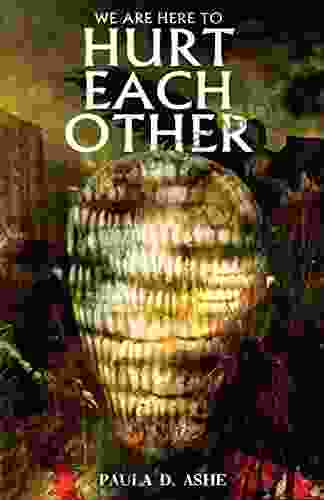
 Ethan Mitchell
Ethan MitchellWe Are Here To Hurt Each Other: A Deep Dive into the...
Yes, I can help you with that. Here is an...
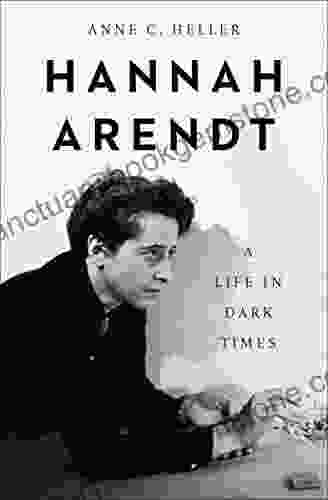
 Xavier Bell
Xavier BellHannah Arendt: A Life in Dark Times
Hannah Arendt was a...
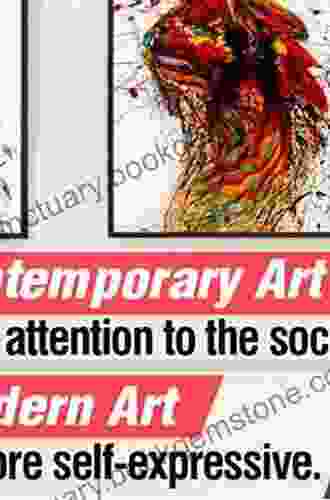
 Donovan Carter
Donovan CarterThe Art of Looking: A Comprehensive Exploration of Visual...
: The Power of...

 Terence Nelson
Terence NelsonUnveiling the Secrets of Moscow's Red Square: A Journey...
In the heart of Moscow,...
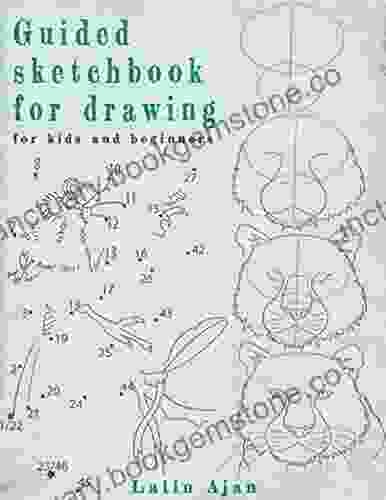
 Cruz Simmons
Cruz SimmonsDrawing Workbook for Kids and Beginners: An Enchanting...
: Unveiling the Magic of Drawing Drawing, an...
4.8 out of 5
| Language | : | English |
| File size | : | 28263 KB |
| Screen Reader | : | Supported |
| Print length | : | 147 pages |


